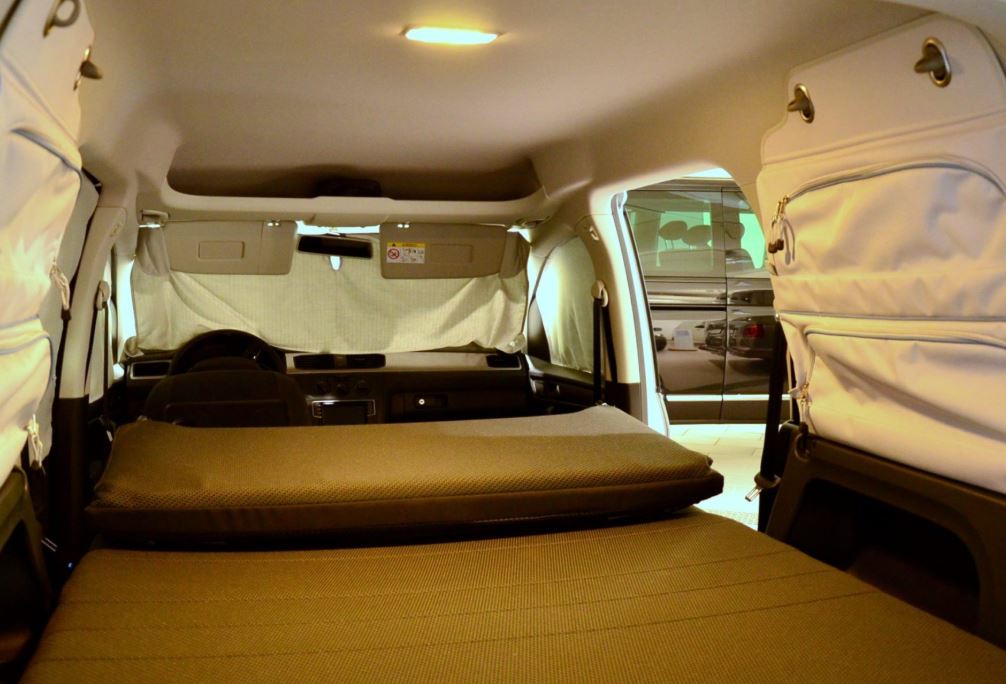Driving in Iceland in September is not some fluffy Instagram fantasy. It’s a test. You’ll deal with shifting weather, roads that demand respect, and rules that aren’t up for debate. That’s why this guide exists.
We’ll get into what the weather really does, which campers handle it best, and how to avoid rookie mistakes on Icelandic roads. You’ll get the lowdown on campsites that stay open, events worth timing your trip for, and places where nature puts on its last big show before winter. If you’re here to wing it, good luck. If you want to do it right, keep reading.
Why September Is a Great Time for a Campervan Road Trip in Iceland
Is September a good time to go to Iceland? Yeah, it’s the sweet spot nobody talks about enough. The crowds? Gone. Waterfalls? Crystal clear. Colors? Think someone spilled red and gold paint across the hills.
You get 12 to 14 hours of light, plenty to roam without staring at your watch. Nights creep in, but that just means Northern Lights start showing off. Roads stay open, campsites actually have space, and rentals stop bleeding your wallet.
Wildlife shifts too, puffins packing bags while whales cruise by. September just works for campervan trips, no gimmicks, no drama, just Iceland at its best.
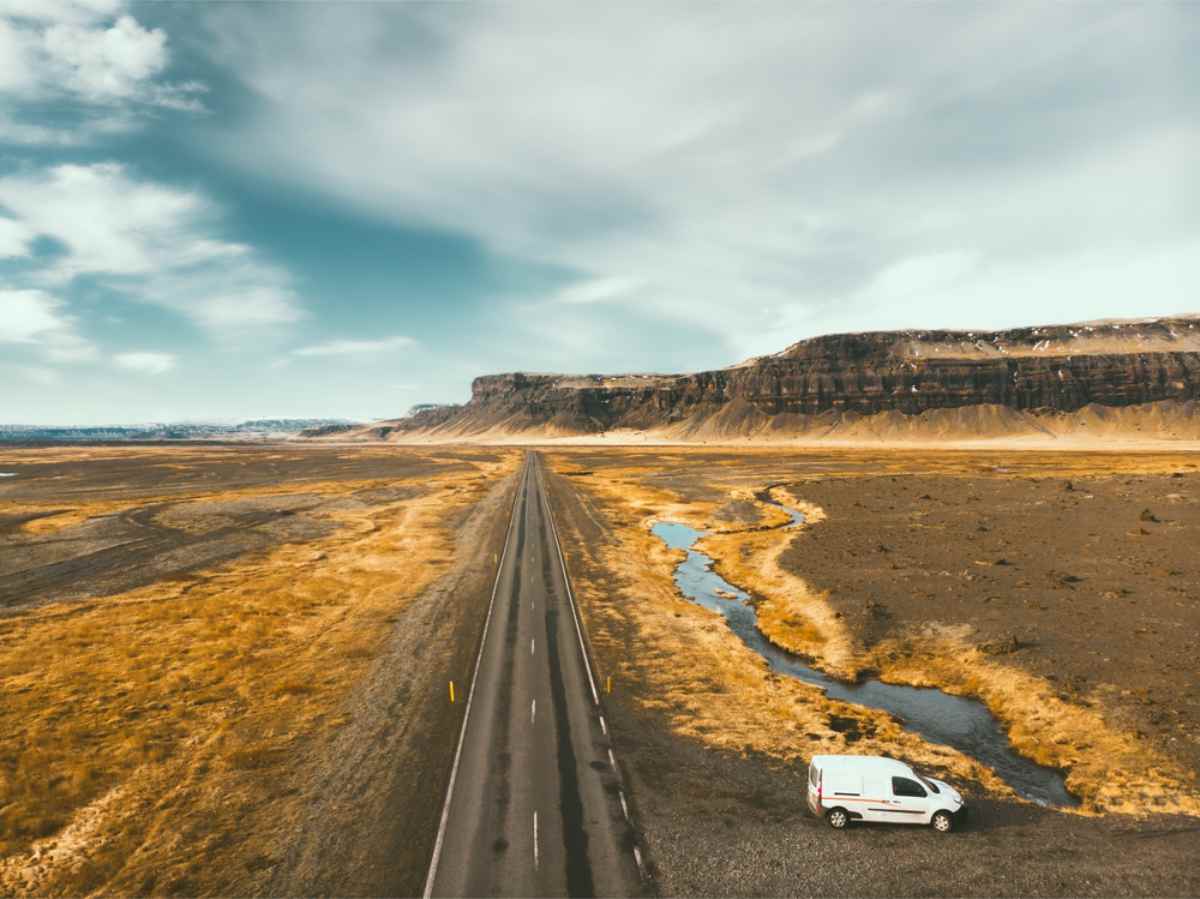
What’s the Weather Like in Iceland in September?
September keeps you guessing. Warm one minute, biting the next. Let’s break it down so you know what’s really going on here.
Daytime Temperatures and Nighttime Conditions
Iceland’s September is quite a weird month. One day you’re fine in Reykjavík, maybe 12°C (54°F), and you’re walking around thinking, ‘hey, this isn’t bad at all.’ Night comes, 7°C (45°F), suddenly it’s not so cute. Then boom, mid-September and it gets colder with highs around 11°C (52°F), nights 6°C (43°F).
End of the month just laughs. Highs barely reach 9°C (48°F). Nights? 4°C (40°F), maybe less if the wind feels like being a jerk. Up in Akureyri? Jip, you can shave off another degree or two. Highlands, Thingvellir, Vatnajökull… days barely 5–8°C (41–46°F). Nights? Frost. Real, icy, ‘why did I book this’ frost. A heater will save you. No heater? You’ll curse at 3 a.m.
Rain, Wind, and How to Prepare
Visiting Iceland in September means dealing with rain that doesn’t quit. Expect drizzle most days, 10 to 18 of them, with southern coasts dumping heavier showers just to keep things interesting.
The wind speed gets around 15-25 km/h (9-16 mph). Feels fine. Then out of nowhere, a gust hits 40 km/h (25 mph), and you’re gripping the wheel harder than you thought. Nights, park into the wind, tie down anything loose, and check every hatch unless you enjoy chasing stuff at 2 a.m.
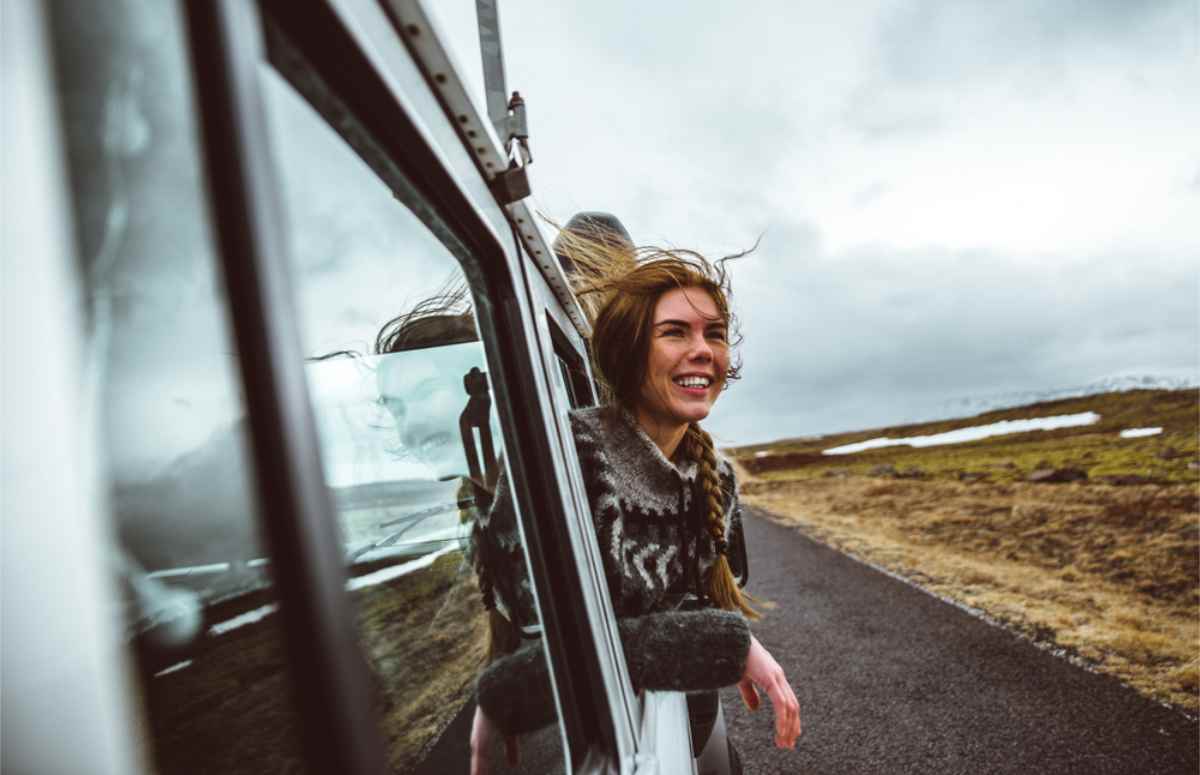
Renting a Campervan in Iceland in September
Renting a camper in September isn’t just about picking any van; it’s about choosing the one that won’t leave you freezing, stuck, or broke halfway through your trip. Let’s get you up to speed about what campervans work and which ones don’t.
Best Types of Campers for This Month
Picking the right camper makes or breaks driving in Iceland in September. Stick to the Ring Road and you’ll be fine with a solid 2WD. Plan to hit F-roads or sneak into the Highlands before they close? You’ll need a 4x4, no debate. Nights get cold fast, so heater-equipped models with Webasto or diesel systems are not optional.
Traveling with friends? Go for something roomy with decent storage, or you’ll trip over each other when the rain keeps you inside. You’ll also need a well-insulated tent. When you rent a campervan through us, you’ll get a superior fiberglass tents that trap heat and keep moisture out. So keep that in mind.
What Campervans Do We Actually Recommend?
For September, you need campers that handle cold nights, give you space when rain traps you inside, and still feel easy to drive. Here are three from our fleet that tick those boxes:
- Fiat Doblo / Kangoo - Compact, heater-equipped, and perfect for couples sticking to the Ring Road. Easy on fuel and simple to handle.
- VW Transporter T6.1 - A step up in comfort with room for three, strong insulation, and built-in heating. Ideal if you want extra space during those long, wet evenings.
- Ford Transit - Seats and sleeps five comfortably, making it an excellent choice for groups or longer trips. Heating keeps everyone warm, and storage swallows all your gear.
Booking Early and Insurance Recommendations
Booking early isn’t a suggestion, it’s survival when traveling to Iceland in September. Autumn colors and Northern Lights pull in shoulder-season crowds, while rental fleets quietly shrink. Wait too long and you’ll be stuck with whatever’s left. Reserve your camper at least two to three months ahead if you want the right fit. Insurance?
Don’t cheap out. Gravel protection saves you from rural road surprises, wind coverage keeps sudden gusts from wrecking your doors, and sand or ash protection covers volcanic tantrums. Rent with us and you get all the coverage built for Iceland’s conditions, not some generic policy that leaves you hanging.
Wild Camping Rules and Campsite Availability
Wild camping has been banned for campervans and motorhomes since 2015, and you can thank a handful of tourists who trashed the rules for everyone else. Driving off-road, dumping garbage, and tearing up fragile moss? Yeah, that’s why the fun stopped. If you’re coming to Iceland in September, stick to the law.
Campervans must use official campsites or marked overnight zones, no exceptions. Luckily, September keeps most sites open, especially around Reykjavík, the South Coast, and popular spots in the East and North. Highland or remote campsites may shut down after the first frosts.
Find them easily with Tjalda.is or Park4Night, and book ahead when you can. Rural sites often take only walk-ins. Expect heated washrooms, hot showers, kitchens, hookups, and waste disposal, although services can thin out late in the month.
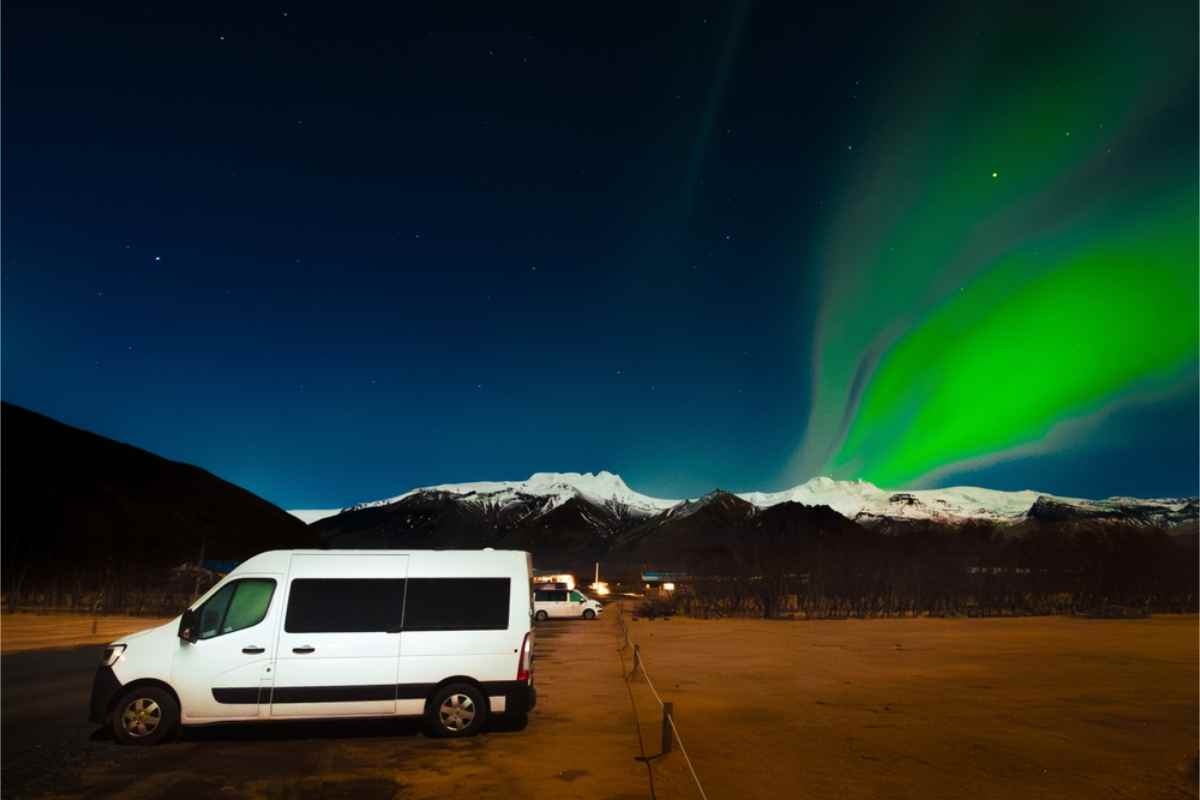
Road Conditions and Driving Tips for September
September roads behave until they don’t. The Ring Road stays open, but the Highlands and sudden storms keep drivers on their toes. Keep reading if you’d rather stay ahead than get stuck.
Are the Highlands Still Open?
Sometimes. Early September lets you sneak in, but closures can hit anytime once snow shows up mid to late month. By October, forget it. If you’re cruising in Iceland in September and thinking, ‘My AWD can handle it,’ stop right there.
F-roads demand a true 4x4, the kind that rental companies actually insure. Some tracks even need high clearance for river crossings. Ignore the rules and you’ll end up stuck, fined, or both. Take the right vehicle or skip the Highlands entirely.
How to Check Road and Weather Updates (Umferdin.is & Vedur.is)
When visiting Iceland in September, road and weather checks are not optional. Start with Umferdin.is for live road conditions. Type in your route or region and read the color codes: green means open, red means closed, orange warns of difficult stretches, and blue signals icy patches.
Pay attention to icons like snowflakes for ice, exclamation points for hazards, and “malbik endar” letting you know asphalt just ended. For weather, Vedur.is or the Vedur app gives hourly forecasts, interactive maps, and alerts on wind, rain, or worse. Turn on route notifications so you’re not caught off guard.
Download SafeTravel too; it sends alerts and can ping rescue teams if things go wrong. Roads closed? Take marked detours, pull into a safe parking area, or wait it out at the nearest station. In Iceland, patience beats calling for a tow in the middle of nowhere.
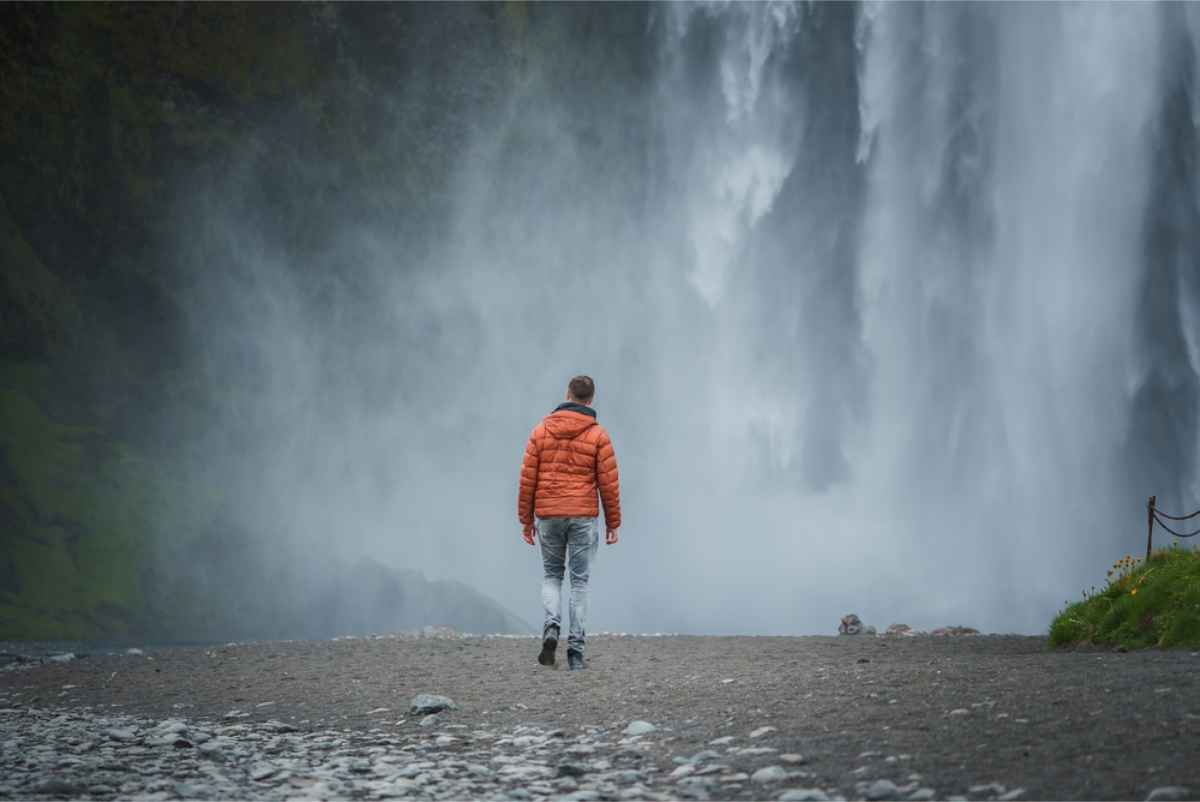
Safety Tips for First-Time Drivers in Iceland
Driving in Iceland in September? Pay attention, or the island will chew you up and spit you out like it's nothing. Forget perfect roads and sunny drives. Do this instead:
- Rain hits, and the roads slick up. Slow down, lights on, stay sharp.
- Wind goes crazy. Ease off the gas, both hands on the wheel, park nose into it.
- Doors. Hold them with both hands. One at a time. Or watch them bend backward.
- Rivers on F-roads. Only with a real 4x4. First gear, keep rolling, no stopping, no hero moves. Heavy rain? Forget it. Insurance won’t save you.
- Gas. Fill up whenever you can. Outside Reykjavík and the south, stations vanish. Keep that tank over half or enjoy walking in the cold.
What to Do in Iceland in September (and Where to Go with a Camper)
Now that we’ve got the serious stuff out of the way, here comes the fun part:
Ring Road Highlights with Van Parking Spots
The Ring Road in an Icelandic September? It’s just one jaw-dropper after another. You drive, you stop, you stare, repeat. Seljalandsfoss, Skogafoss… huge lots, easy to park, no drama. Fjadrargljufur canyon? Yep, it’s got its own van parking.
Reynisfjara? Plenty of space, just don’t turn your back on those waves. People have been scuked into the ocean and drowned. Skaftafell, in Vatnajökull, is the jackpot with glacier hikes and a campground that actually has what you need. Jökulsárlón Glacier Lagoon? Big lot, yes.
Sleeping there? Nope, don’t even think about it. Overnight only at real campsites such as Vík, Mývatn, Skaftafell, and Egilsstadir. Showers, power, space.
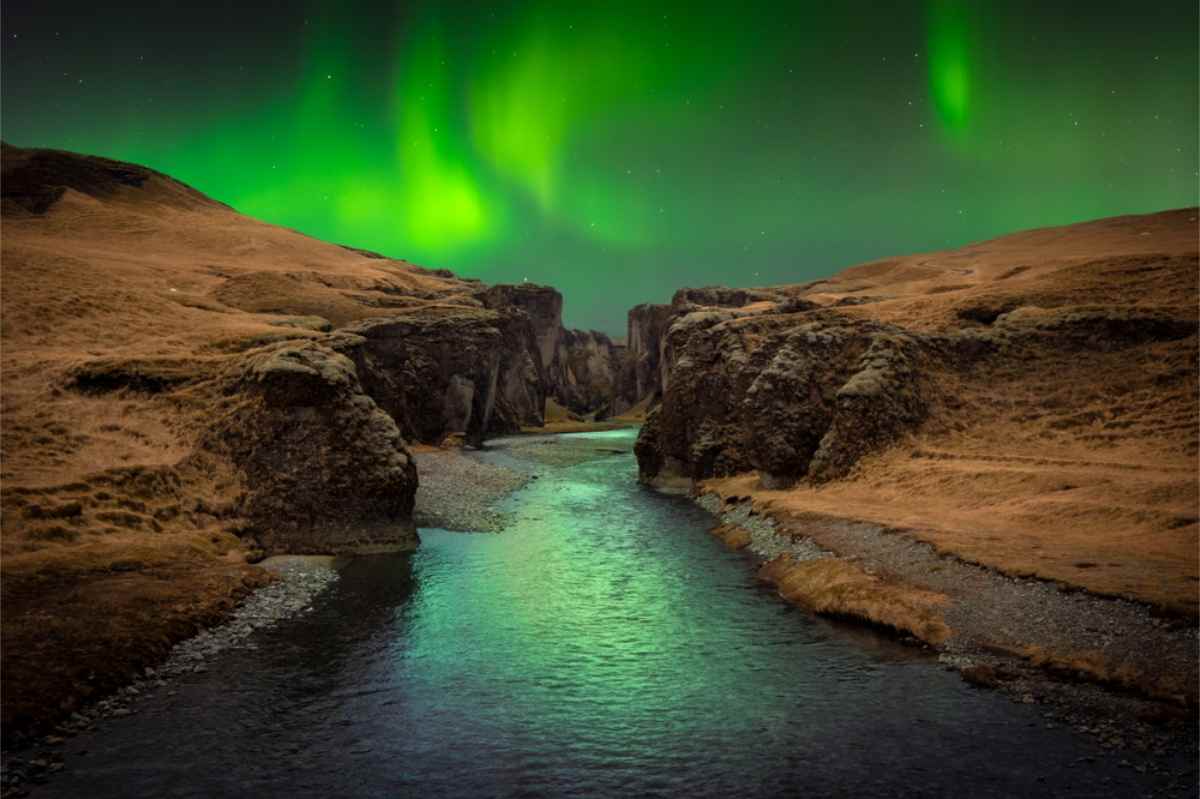
Final Chance to Explore the Highlands
Wondering what to do in Iceland in September? If the Highlands are on your list, you’re cutting it close. Landmannalaugar and Askja still call, but late September plays by its own rules. Roads like F208 hang on until early or mid-month, then storms or early snow can slam them shut without warning.
Always check for road closures before you even think about heading out. Fuel up every time you see a station, because there won’t be another for hours. Pack food, water, maps, and emergency gear.
Remember, no 4x4 equals no driving on F-roads. Standard cars and cute SUVs won’t make it. As the month crawls toward October, routes vanish, and only guided super jeep tours keep running. Even huts and campsites start closing as soon as it’s not safe. If you’re going, go prepared, or stay on the Ring Road and watch from afar.
Puffins, Whales, and Northern Lights: Nature in Transition
September in Iceland flips fast. Puffins crowd the cliffs during the first week, then they’re gone. Dyrholaey, Latrabjarg, and the Westman Islands are your best shot before they vanish.
Whales? Still everywhere. Husavík and Skjalfandi Bay give the best encounters, but Reykjavík tours do the job if you’re short on time. Expect humpbacks, maybe orcas if luck’s on your side.
Nights stretch longer, and the Northern Lights start creeping back. Leave the city lights behind. Find darkness in the countryside, near Vatnajökull, or by Jökulsárlón lagoon. Around the equinox, the auroras are brighter. Check forecasts, stay patient, and wait for the sky to explode.
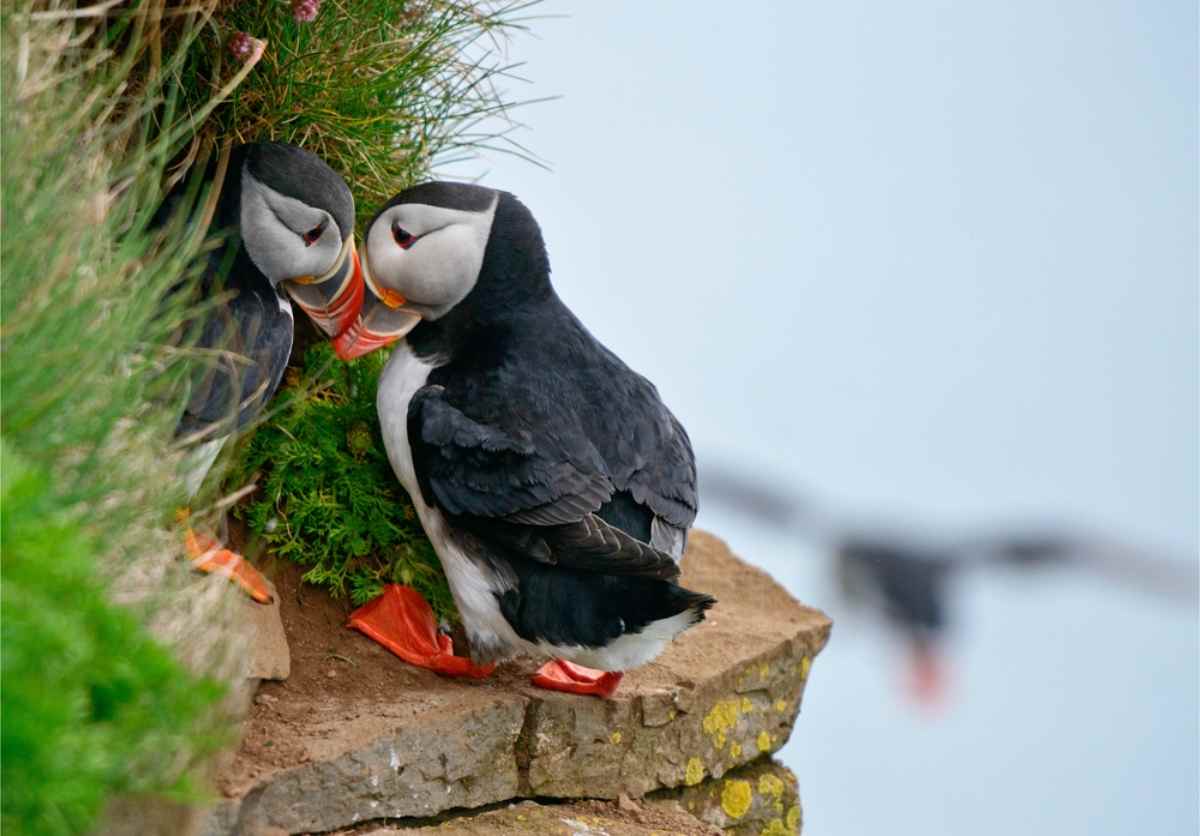
Geothermal Pools and Hidden Hot Springs for Van Lifers
Wondering what to do in Iceland in September besides chasing waterfalls and lights? Soak. Geothermal pools and hidden hot springs are a van lifer’s dream. Secret Lagoon in Fludir, Gudrunarlaug in the west, Mývatn Nature Baths, and Hellulaug in the Westfjords all sit steps from parking.
Want something quieter? Hrunalaug and Seljavallalaug need a short walk, but they are worth it. Follow the rules: shower first, no soap, and keep noise low. Use changing rooms when you can, or be discreet. Go early or late to dodge crowds. Drop donations where asked and leave no trace so others can enjoy them.
September Events Worth Catching on the Road
September in Iceland is not just about landscapes; the locals throw in a few surprises. From sheep round-ups to fireworks and film screenings, here’s the full rundown:
Réttir (Sheep Round-Up)
Coming to Iceland in September puts you right in time for Réttir, the country’s legendary sheep round-up. Every fall, farmers sweep the highlands, driving thousands of sheep back to winter farms using horses, ATVs, and sheer grit on foot.
It happens all over, especially in the north and south, with dates shifting based on weather. The scene is a mix of hard work and tradition, with families sorting flocks by ear tags while songs and laughter fill the pens. Visitors can watch, and with the right invite, even join in.

Night of Lights (Ljózanótt)
Ljósanótt starts in Reykjanesbær on the first weekend of September. The whole place flips. Lights, music, food, everywhere. Around 30,000 people show up, making it feel more like a huge backyard party. Concerts spill into the streets, art hangs where you don’t expect it, kids run wild, and workshops just happen.
Once you think it couldn’t get any crazier, think again. When Saturday night comes, fireworks slam the sky, glowing art makes the town look unreal, and autumn sneaks in while you’re distracted. You grab local food, maybe fish soup, and stand there with music in the background thinking, ‘yeah, this is why I came.’
Reykjavik International Film Festival
Reykjavik goes all out at the end of September with its International Film Festival. It runs from September 25 to October 5, 2025, and the city feels alive. Over 200 films from 40 countries are on the screens, premieres, indie stuff, and Icelandic shorts you won’t see anywhere else. Screenings aren’t just in cinemas like Bíó Paradís.
They pop up in odd spots, too. Outdoor shows, even movies, are at a swimming pool. You get Q&As with directors, workshops, and a crowd that’s into it. If your road trip starts or ends in Reykjavik, this is an easy win.
View this post on Instagram
What to Pack for a September Camper Trip in Iceland
Packing for a September camper trip in Iceland isn’t about looking good; it’s about practicality. Here’s what you need to know:
Clothing and Gear for Variable Weather
September in Iceland throws every type of weather at you, often in one day. Packing smart keeps you warm, dry, and ready for whatever hits. Focus on layers and gear that can handle rain, wind, and sudden cold. Bring:
- Merino or synthetic base layers for moisture control
- Fleece or wool mid-layer for warmth
- Waterproof and windproof shell jacket and pants
- Warm hat, gloves, and a scarf or buff
- Wool socks (several pairs) and quick-dry undergarments
- Sturdy waterproof hiking boots and a rain cover for your pack
- Packable down vest, lightweight gaiters, and sunglasses to block glare
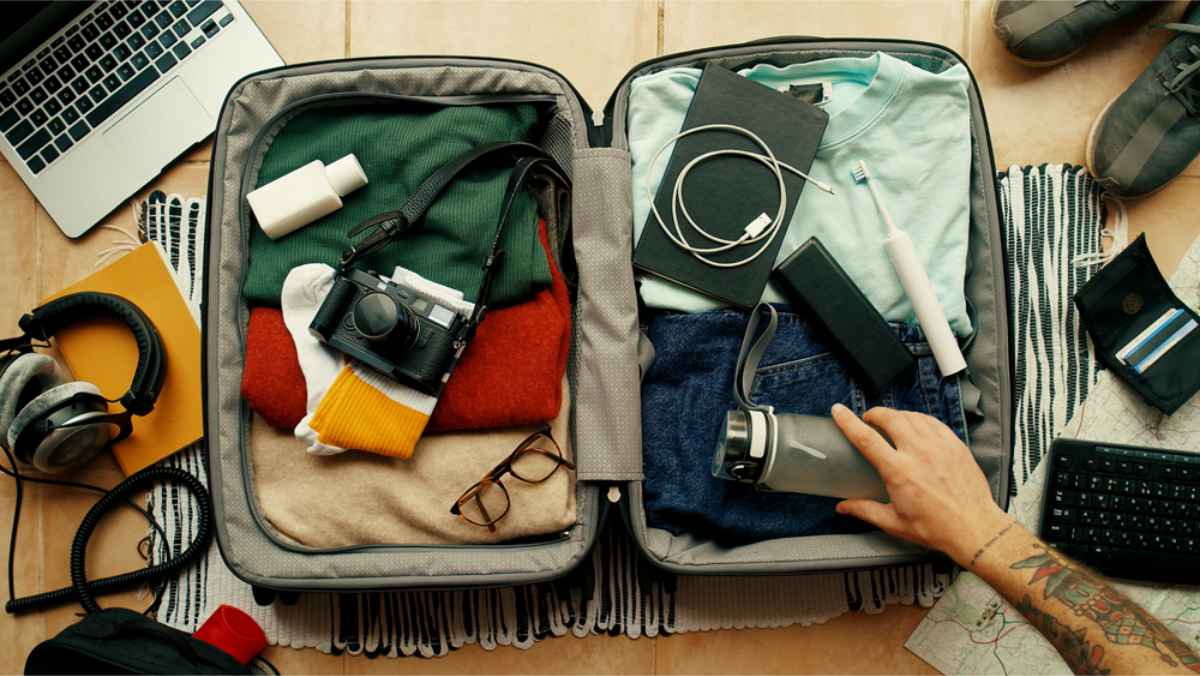
Campervan-Specific Items: Blankets, Cooking Gear, Headlamps
Rental campervans cover the basics, but a few extra items make September nights in Iceland far more comfortable. Cold evenings, limited outlets, and mixed gear quality mean you should pack or rent extras. Bring:
- Extra blankets or sleeping bags to stay warm when temperatures dip close to freezing.
- Portable camping stove and quality kitchen tools for easier meal prep outside the van.
- Headlamps for hands-free light during nighttime walks or reading inside.
- Power banks to keep phones and cameras charged when outlets are scarce. Plus, our cold weather drains batteries fast
Digital Essentials: Charging Solutions, Navigation, Camping Apps
Digital essentials keep your campervan trip in Iceland running smoothly. Power, navigation, and apps all matter when you are far from towns. Pack smart and stay prepared with:
- Travel adapter with multiple USB ports, Iceland uses Type C/F plugs and 230V.
- 12V-to-AC inverter or plan to charge larger devices at campsites with mains power.
- Offline maps via Google Maps, Gaia GPS, or Maps.me, plus a paper map as backup.
- Apps: Vedur for weather, SafeTravel for alerts, and Tjalda.is for campsite info.
- Power banks (10,000–20,000mAh+) and a compact solar charger for longer stays off-grid.
- Charge at powered sites and use airplane mode to save battery when the signal drops.

Final Tips for Driving Iceland in September with a Camper
Now, for the grand finale, you wouldn’t want to miss this part:
Fuel Up Often and Plan for Remote Stretches
Fueling up in Iceland is simple until you leave the main roads. Stations in Reykjavik and along the Ring Road sit about every 100 km (62 mi), so no problem there. The trouble starts in the Westfjords, East Fjords, North Fjords, and especially the Highlands, where stations vanish.
Fill up when your tank hits half-full before leaving any main town. Never gamble on running empty in remote areas. If it happens, stay calm, aim for the nearest village, or use the 112 Iceland emergency app. Carry spare fuel when heading into isolated regions. Good planning keeps your road trip stress-free.
Respect Nature and Follow Road Etiquette
Driving in Iceland in September means respecting the land and the rules that protect it. Off-road driving is banned for a reason; tire tracks on moss or lava can scar the landscape for decades and fines are steep. Stay on marked roads, no exceptions.
Camp only at official sites, pack out every bit of trash, and never pitch a tent on private land without asking. Sheep, horses, and even cows wander the roads, so slow down and watch for sudden crossings. Drive on the right, keep headlights on at all times, respect speed limits, and take single-lane bridges carefully.
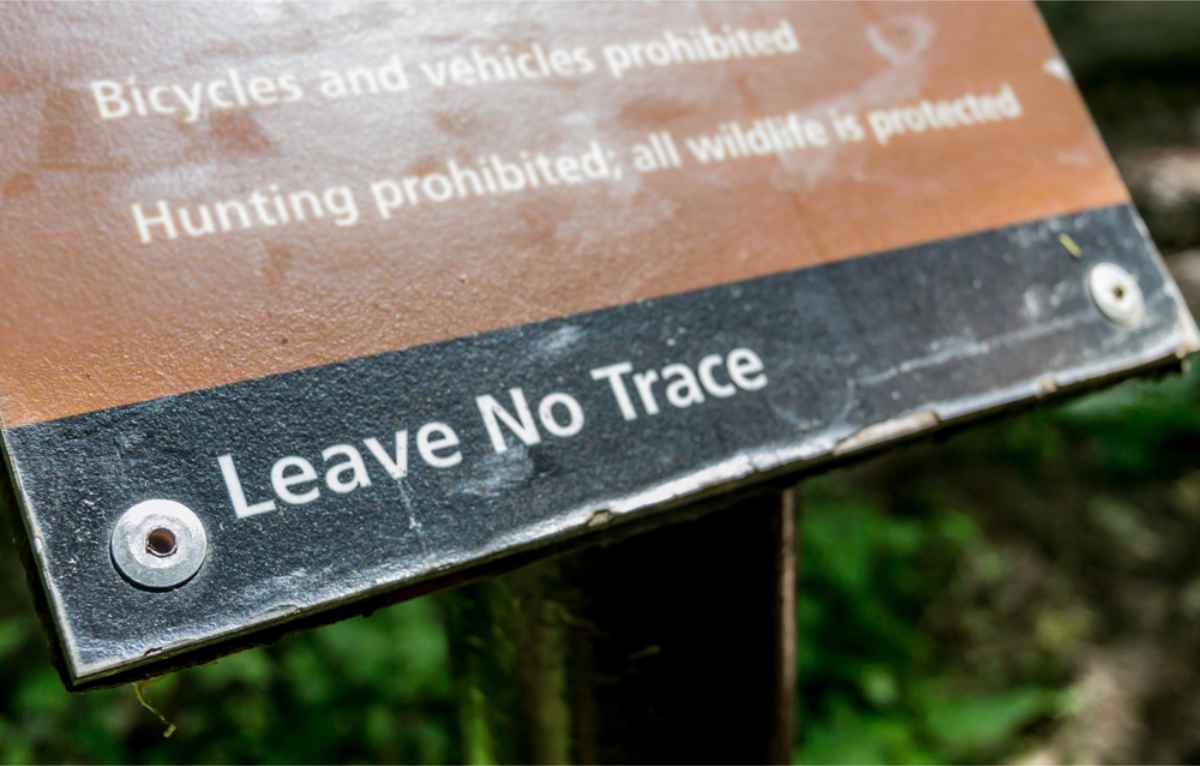
Be Flexible and Let the Weather Guide Your Route
Coming to Iceland in September means letting the weather call the shots. Storms, wind, and rain can close roads or block access to attractions with no warning. The smart move? Leave gaps in your schedule.
Build in weather windows so you are not stuck canceling everything when plans change. Keep a backup list ready, such as museums, hot springs, or nearby waterfalls, for when hikes are off-limits. Stay flexible and roll with it. Those unexpected detours often lead to places you never planned to see but will never forget.
Is September the Best Time for a Road Trip in Iceland?
Driving in Iceland in September strikes the perfect balance. Summer crowds fade, prices ease, and autumn colors take over. Nights grow dark enough for Northern Lights, yet most roads stay open.
Early in the month, the Highlands are still within reach, though late travelers might miss them. The weather keeps you guessing, so flexibility matters. This month works best for those who like fewer tourists, crisp air, and a mix of seasons in one trip.
Want endless daylight or full Highland access? Go in summer. Prefer snow and frozen landscapes? Choose winter. September offers Iceland at its most rewarding.


 By
By
